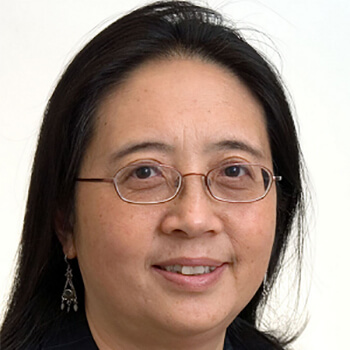Cell-Cell Interaction in Giant Vacuole/Pore Formation

About the Research Project
Program
Award Type
Standard
Award Amount
$150,000
Active Dates
July 01, 2016 - June 30, 2018
Grant ID
G2016099
Goals
Normal pressure inside of the eye is maintained through a dynamic balance between the production and drainage of aqueous humor, a fluid that circulates in the front of the eye and bathes the lens. Higher eye pressure is commonly associated with primary open-angle glaucoma (POAG), a disease that is a leading cause of blindness worldwide. For aqueous humor to drain out of the eye, it needs to exit through a tube called Schlemm’s canal (SC). Two unique structures can be found in the cells that line the wall of SC: giant vacuoles, which are pressure-dependent outpouchings, and pores, which are openings. Previous studies have shown that a reduction in the density of both giant vacuoles and pores occurs in the eyes with POAG, indicating that their scarcity potentially may contribute to the elevated outflow resistance characteristic of this disease. We propose to study two types of cellular interactions in the cells that line SC using a newly developed, advanced 3D electron microscopy technology. The major goal of this project is to determine whether each of these two types of cellular interactions plays a role in regulating aqueous outflow by influencing giant vacuole and pore formation.
Summary
Primary open angle glaucoma (POAG), a disease that is a leading cause of blindness worldwide, is commonly associated with higher eye pressure. To understand the causes of this higher eye pressure, we need to first understand the mechanism of how normal eye pressure is produced. Normal pressure inside of the eye is maintained through a dynamic balance between aqueous humor production and drainage. For aqueous humor to drain out of the eye, it needs to exit through a tube, Schlemm’s canal (SC). Two unique structures can be found in the cells that line the inner wall endothelium of SC: giant vacuoles, which are pressure-dependent outpouchings, and pores, which are openings. Previous studies have shown that a reduction in the density of pores occurs in the eyes with POAG, indicating that this reduction can potentially contribute to the elevated outflow resistance characteristic of this disease.
The goal of this project is to investigate two types of cellular connections in the cells that line the inner wall endothelium of SC. We are using a newly developed, advanced 3D electron microscopy technology to determine whether these two types of cellular connections play a role in giant vacuole and pore formation.
Our specific aim 1 is to determine whether a decrease in cellular connections between the inner wall endothelium and its deeper juxtacanalicular connective tissue cells (labeled IW/JCT connections) plays a role in giant vacuole and intracellular pore formation, and whether a decrease in cellular connections between adjacent inner wall endothelial cells (labeled IW/IW connections) promotes paracellular pore formation in normal human eyes.
Our specific aim 2 is to determine whether an increase in the connections between IW/JCT and between IW/IW inhibit the formations of giant vacuoles and pores in human POAG eyes compared to normal human eyes.
The possible role of these two types of cellular connections (IW/JCT and IW/IW) in the inner wall endothelium in modulating aqueous outflow remains unexplored, primarily due to the lack of effective methods to quantify the degree of connectivity. Using serial block-face scanning electron microscopy, we successfully reconstructed 3D geometries of the target cells, giant vacuoles and pores, and the aforementioned connections between IW/JCT and IW/IW. This advanced 3D-EM technology puts us in a pioneering position to quantitatively characterize the effects of changing pressure on cellular connectivity in normal and POAG eyes. Our unique methods enable us, for the first time in glaucoma research, to probe cellular interactions that may contribute to giant vacuole and pore formation and to confirm their role in regulating aqueous humor outflow.
Related Grants
National Glaucoma Research
From Resilience to Vulnerability: How Stress Accelerates Aging
Active Dates
July 01, 2025 - June 30, 2027

Principal Investigator
Dorota Skowronska-Krawczyk, PhD
Current Organization
University Of California, Irvine
National Glaucoma Research
Novel Mechanisms to Regulate Eye Pressure
Active Dates
July 01, 2025 - June 30, 2027

Principal Investigator
Colleen McDowell, PhD
Current Organization
University of Wisconsin-Madison
National Glaucoma Research
Enhancing Access to Glaucoma Care Using Artificial Intelligence
Active Dates
July 01, 2025 - June 30, 2027

Principal Investigator
Benjamin Xu, MD, PhD
Current Organization
University of Southern California



